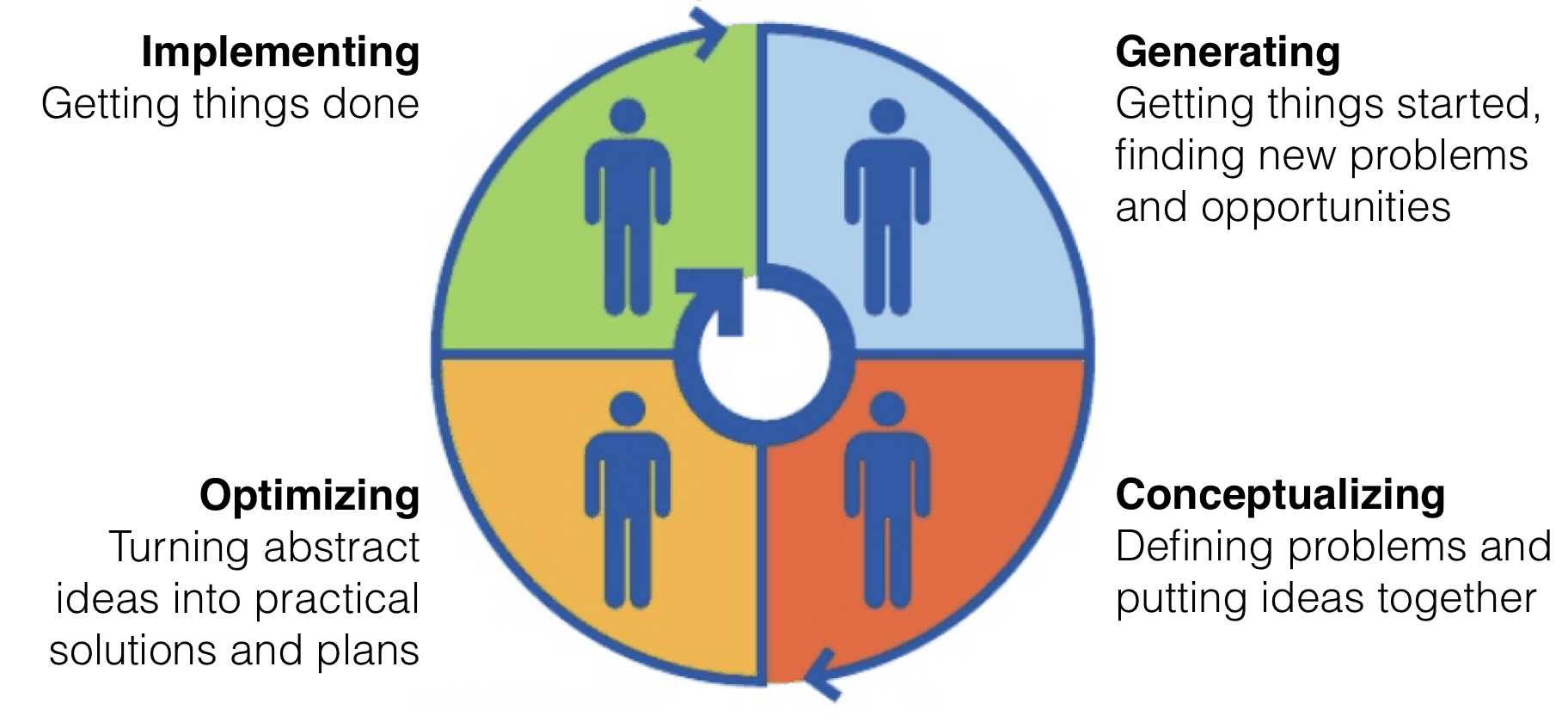…
Basadur Profiles
…

Many people are obsessed with classifications and measurements, especially for things that are otherwise difficult to measure—like people. There are numerous classification systems for people that assess characteristics, performance, and personality types.
None of them are particularly accurate or “true.”
Undoubtedly, you’ve heard of the Meyers-Brigg test, a classification system that results in a four letter code, each containing one of two variables. It’s a mainstay of business and engineering tools because it neatly parses people into understandable categories. Many people think that their personalities have been accurately “assessed” and, therefore, are knowable and comparable.
This isn’t the case, however.
It’s easy to ignore the built-in biases of the Meyers-Briggs test and system (and those of other approaches). First, the test is subjective and you can score differently whenever you take it (particularly if you score near the edge of two categories). Second, it creates a 4-dimensional solution space that is difficult to display and understand. So, these are usually shown in 2 dimensions that truncate the 2 into 4, inaccurately, creating frequent confusion.
Such is the situation with most people-classification schemes.
This doesn’t mean that these categories can’t be helpful, just that they can’t be considered accurate, “scientific,” or static. As long as we acknowledge that there is always some ambiguity, as well as the possibility of change, they can be used effectively to assess a group’s readiness for work. They can also tell us something about the development and innovation processes, allowing us some insight on how to improve how we work and how we build effective teams.
One of the most helpful I’ve found is the Basadur Profile. This isn’t so much about classifying individuals (though, that’s part of the process) but the make-up of the group and the needed skills to lead during different parts of the innovation or development process. And, it’s not so much classifying personality traits as states. It makes it easy to see lack of balance among skills in a team as well as which skills should be more dominant at any time in the development process.
Basadur classifies people into four groups, based on their dominant skill: Generator, Conceptualizer, Optimizer, and Implementer. These correspond to the dominant activities in the innovation process.
Created by Min Basadur in 1981, the Basadur Model helps us understand two important things that often ruin team performance:
1) a group with incomplete skills is likely to fail in parts of the process that require those skills.
2) different parts of the process require different kinds of leadership so the wrong person leading any given part can ruin the process.
In other words, an “optimizer” leading a brainstorming exercise will likely try to speed through the process as efficiently as possible, always driving toward the end-goal. That’s not how brainstorming works. Similarly, a conceptualizer leading the implementation phase may never drive toward finished steps, always preferring to keep things “open” for fresh ideas. It’s not that any particular person can’t lead well in phases they don’t naturally gravitate toward. Individuals, especially those acknowledging their skills and limitations, can continuously remind themselves that a different set of objectives might be more important at different times. But, it’s rare for managers and leaders to hold this state of mind and most don’t even understand the dynamic, to begin with.Knowing these two simple truths about teams and development, and having a way to assess the people involved, can go a long way toward improving team performance as well as outcomes.
There are other helpful models, as well. StrengthFinders, for example, has a system and quiz to help people understand what their strengths are (no one can be strong in everything). Linda Yaven, a professor I’ve taught with before, has successfully evolved this system to teach her students how to understand their strengths and work with them in the context of team work. She categorizes weaknesses, for example, as “future strengths,” acknowledging the ability for people to learn and grow their strengths, skills, and understandings.
This introduces another new trend, which is the creation of a “balanced” team scorecard. Using a simply spider diagram to overlay skills of everyone on a team, it can be quickly evident when important skills are not adequate represented by those in the team. Recently, there have been several examples of this approach: Intelleto offers their Balanced Team Pie for just this purpose.
Download the Tool:
Basadur Profile
Read the Book:
StrengthFinders 2.0
Strengths Based Leadership